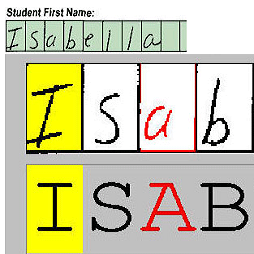Linked Data is used in various fields as a new way of structuring and connecting data. Cultural heritage institutions have been using linked data to improve archival descriptions and facilitate the discovery of information. Most archival records have digital representations of physical artifacts in the form of scanned images that are non-machine-readable. Optical Character Recognition (OCR) recognizes text in images and translates it into machine-encoded text. This paper evaluates the impact of image processing methods and parameter tuning in OCR applied to typewritten cultural heritage documents. The approach uses a multi-objective problem formulation to minimize Levenshtein edit distance and maximize the number of words correctly identified with a non-dominated sorting genetic algorithm (NSGA-II) to tune the methods' parameters. Evaluation results show that parameterization by digital representation typology benefits the performance of image pre-processing algorithms in OCR. Furthermore, our findings suggest that employing image pre-processing algorithms in OCR might be more suitable for typologies where the text recognition task without pre-processing does not produce good results. In particular, Adaptive Thresholding, Bilateral Filter, and Opening are the best-performing algorithms for the theatre plays' covers, letters, and overall dataset, respectively, and should be applied before OCR to improve its performance.
翻译:暂无翻译



